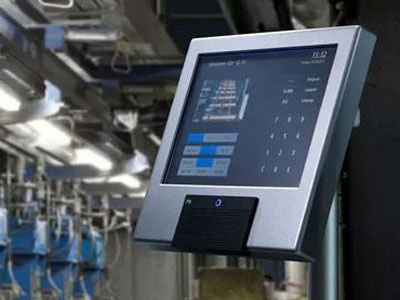Key Takeaway
When choosing an industrial computer, focus on processing power. Check the processor type, clock speed, and core/thread performance. RAM is crucial for smooth operation; more RAM means better multitasking. Storage options, like SSDs, are faster and more durable. Ensure the operating system supports your applications. Look at display properties for readability in various lighting conditions. Consider environmental protection; the computer should withstand dust, moisture, shock, and vibration. Check connectivity options like USB, Ethernet, and wireless capabilities. Lastly, think about mounting options to fit your workspace. Choose based on your specific industrial needs.
Understanding Application Needs
First and foremost, grasping the specific application requirements is crucial. Each industrial setting has unique demands that dictate the type of computer needed. For instance, a manufacturing floor might require rugged systems capable of withstanding harsh conditions and frequent vibrations. On the other hand, a control room may prioritize high processing power for real-time data analysis and decision-making. By aligning the computer’s capabilities with these needs, you ensure optimal performance and longevity.

Evaluating Performance Metrics
When assessing the performance metrics of industrial computers, it’s crucial to go beyond mere processing speed. Modern industrial operations demand robust systems capable of handling multitasking and diverse applications simultaneously. One of the key factors to consider is the RAM capacity. RAM, or Random Access Memory, acts as the workspace where active programs and data are stored temporarily. In industrial environments where multitasking is commonplace, ample RAM ensures smooth operation without slowdowns or crashes.
Another critical consideration is the type of storage used. Traditional Hard Disk Drives (HDDs) have been standard for years, but Solid State Drives (SSDs) offer significant advantages in speed and reliability. SSDs provide faster data access and retrieval, making them ideal for time-sensitive tasks such as real-time data logging or monitoring processes on the factory floor. Their ability to withstand vibrations and shocks better than HDDs further enhances their suitability for industrial settings where machinery vibrations are common.
Graphics capabilities also play a pivotal role, especially in applications involving visual data representation or monitoring. Industrial computers often need to handle complex graphical interfaces with precision and speed, requiring dedicated graphics processing units (GPUs) or integrated graphics that can support multiple monitors or high-resolution displays.
Environmental Suitability
Industrial environments pose unique challenges due to their harsh conditions, ranging from extreme temperatures to exposure to dust, moisture, and other contaminants. Therefore, selecting a computer that can withstand these environmental stresses is critical to ensuring long-term reliability and performance.
One of the primary considerations is the environmental specifications of the computer, often indicated by IP (Ingress Protection) ratings. These ratings classify the degree of protection the computer offers against intrusion from solids (like dust) and liquids (such as water). For instance, an IP rating of IP67 signifies complete protection against dust ingress and protection against temporary immersion in water up to 1 meter deep. Such robustness is essential in industrial settings where dust and occasional exposure to water are common.
Temperature tolerance is another crucial factor. Industrial computers must operate reliably across a wide range of temperatures, from sweltering heat in foundries or manufacturing plants to sub-zero conditions in refrigerated warehouses. Ensuring that the computer’s design includes temperature resistance capabilities, often specified in operational temperature ranges, guarantees uninterrupted operation regardless of environmental extremes.
Moreover, the physical construction of the computer plays a role in its suitability for industrial use. Ruggedized enclosures and components designed to withstand vibrations, shocks, and electromagnetic interference (EMI) are preferred. These features not only enhance durability but also minimize downtime and maintenance costs associated with equipment failures.
Customization Options
Customizing industrial computers is crucial to meet specific operational needs within various industries. This flexibility allows businesses to integrate specialized I/O ports that ensure seamless connectivity with industrial equipment, such as PLCs and sensors. Moreover, the ability to configure software according to precise requirements enhances efficiency and compatibility within existing infrastructures.
Industrial computers often feature modular designs, facilitating future upgrades and adaptations as technology advances. This modular approach not only prolongs the lifespan of the equipment but also minimizes downtime during upgrades. For instance, a modular system can easily accommodate advancements in processing power or new connectivity standards without requiring a full system replacement.
Budget Considerations
When considering industrial computer solutions, balancing quality and performance with budget constraints is paramount. While upfront costs are a consideration, total cost of ownership (TCO) provides a comprehensive view by factoring in maintenance, downtime risks, and expected lifespan of the equipment.
Choosing reliable brands known for durability and excellent support can mitigate long-term expenses associated with frequent repairs or replacements. This strategic approach not only ensures continuous operation but also reduces the risk of unexpected downtime that can disrupt production schedules and impact profitability.
Conclusion
In conclusion, the process of selecting an industrial computer demands a holistic approach. By understanding the application’s unique needs, evaluating performance metrics, ensuring environmental suitability, exploring customization options, and considering budget constraints, you pave the way for enhanced efficiency and reliability in your industrial operations.
Remember, the right industrial computer isn’t just a purchase; it’s an investment in optimizing productivity and ensuring seamless workflow continuity. With careful consideration and adherence to these guidelines, you empower your team with the tools needed to thrive in today’s dynamic industrial landscape.
